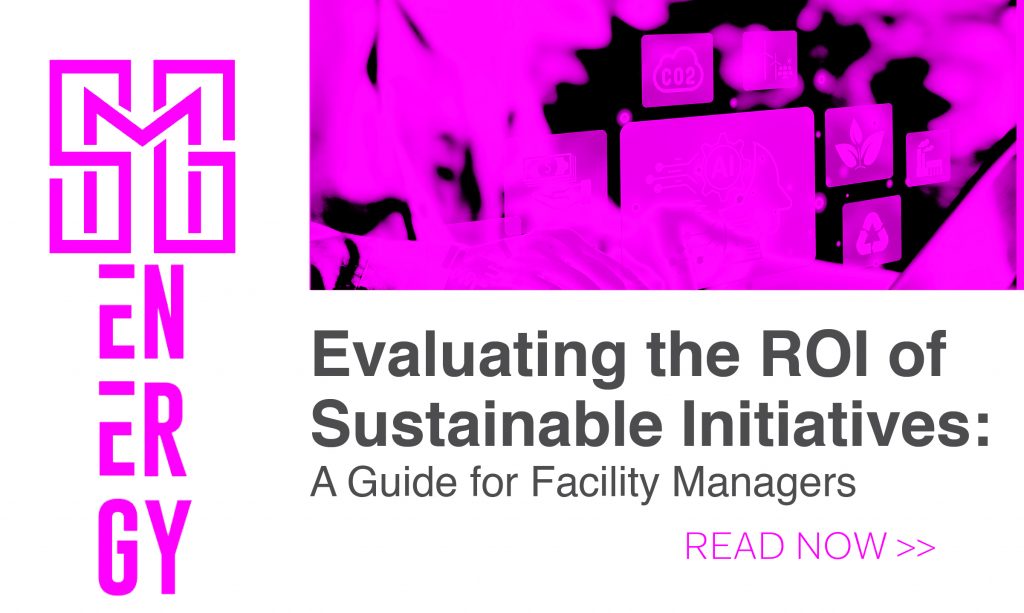For growth-minded businesses who operate large distributed portfolios, rising energy costs can exponentially affect bottom line profitability.
You’re not alone. Rising energy prices have been making headlines across the economy in recent years – no more acutely in 2023. Bloomberg reported that August of 2022 saw the most significant spike in energy costs since 1981 at 15.8% year over year, with natural gas leading the pack at a 33% price increase. With volatile energy prices keeping multi-site companies on edge, growth-minded businesses are actively looking for solutions to reduce costs, streamline efficiency and mitigate risk.
Rising energy costs are an unwelcome addition to an uncertain economic landscape, higher operational costs and a competitive labor market. As business energy costs rise alongside all others expenses, more companies are looking at ways to improve energy efficiency, reduce energy “spend” while supporting sustainability and broader ESG initiatives along the way.
If you’re a growth-minded multi-site business looking to fight back against rising business energy costs, you’re in the right place. In today’s post, we will discuss what’s behind the price hikes, what role sustainability plays in the solution, and five actionable strategies to lower costs today.
What’s Behind the Rise in Business Energy Costs for Multi-Site Businesses?
For multi-site companies, rising energy costs are a high-stakes proposition. With a portfolio of diverse properties and energy consuming assets, rising costs can take an exponential toll on a business’s energy budget and overall profitability. Before discovering some of these innovative strategies, we must understand the critical challenges between multi-site operators and those lower energy bills.
Low Visibility Leads to Higher Costs
For multi-site businesses, one of the most significant challenges in pursuing a more efficient energy strategy is the difficulty of coordination across extensive portfolios and multiple stakeholders. With numerous energy providers, team members, and property conditions, gaining visibility over energy use throughout all facilities is nearly impossible. Multi-site businesses can improve efficiency across their operations with reliable, comprehensive visibility over their energy usage.
Time-Consuming Processes Result in Inefficiencies
Few multi-site businesses have the internal resources to allocate to energy management in a highly competitive labor market. The complex, ongoing processes around energy management–including efficiency audits, service provider selection, and sustainability initiatives–often require more time than a business has to give. Without dedicated resources for energy management, multi-site businesses struggle to push back against rising energy costs and keep on pace to achieve the ESG initiatives set forth by corporate leadership .
A Lack of Operational Data Means a Lack of Actionable Insights
Often, energy demand comes in waves, increasing alongside the need for heating, cooling, and other energy-intensive processes. These peaks and valleys of demand present a valuable opportunity for multi-site businesses to learn more about their energy usage and how to prepare for higher demand. However, a lack of easily accessible utility data means that, for some multi-site businesses, peaks in energy demand arrive with little warning, resulting in lower efficiency and a higher bill.
As business energy prices rise, businesses seek innovative solutions to lower costs. For many multi-site companies, this means a renewed pursuit of sustainably-minded energy management strategies.
Five Essential Strategies to Lower Business Energy Costs Across Your Distributed Portfolio
Now that we’ve covered some critical challenges between multi-site businesses and lower energy costs, it’s time to talk solutions. We’ve compiled five essential strategies for growth-minded companies that leading multi-site enterprises use to lower business energy costs across their distributed portfolio.
1. Provide Visibility To Energy Usage Across Your Portfolio
Before investing in sustainability, businesses must understand their energy usage. You can’t manage what you can’t measure, after all. Yet a surprising number of businesses need a cohesive mechanism for understanding their total energy usage, so they don’t have a baseline starting point for how much energy they use now. With that baseline, though, it’s possible to set meaningful energy goals. That means, first and foremost, setting up strategies for gathering the intel you will need to make sound decisions. Whether that information comes from one site or many, you need it to be strategic is your approach and without leveraging the “actionable” data – the historical records of how your buildings and assets perform – you are dead in the water.
2. Establishing Achievable Goals are Key to Scalability
The next step is establishing clear expectations of energy usage. This next step is a critical component in reducing business energy waste, but it again depends on that view from above. A practical energy goal requires understanding how you’re currently using energy, then looking for intelligent ways to save it using your existing infrastructure.
You can shave excess energy use off in several ways, such as:
- Optimizing your current processes by repairing, replacing, or upgrading critical equipment to more energy-efficient models
- Shutting down equipment that isn’t actively in use
- Changing or sequencing the times when equipment runs to reduce peak demand on the energy grid and pay non-peak energy prices
- Using batteries to store energy for use during peak times
- Forecasting energy usage and putting strategies in place to meet it even during higher demand times
- Running frequent energy audits to find additional areas of energy-saving
These strategies will help you spot your energy-saving opportunities and establish strategies in lowering energy costs.
3. Develop an Energy Roadmap For Your Distributed Portfolio
While Steps 1 and 2 are very admirable, they leave many businesses scratching their heads. If it were so easy to put such objectives in place, you’re thinking, wouldn’t we have done so already? Many companies raise a fair point, but it’s predicated on a fundamental misunderstanding: you must do this alone. One of the best ways to reduce your energy usage and make a dent in our carbon emissions crisis is to partner with proven experts in developing an actionable strategy. This strategy helps you develop investments that often repay in long-term sustainability savings and profitability drivers. Working with people who routinely identify energy opportunities across multi-site businesses will give you the tools to make these changes quickly, creating an energy efficiency roadmap that will guide you well into the future.
4. Adopt Portfolio-Wide Sustainable Strategies
Once you’ve implemented your strategies, it’s time to adopt them. As anyone who’s ever pushed any initiative across a diverse portfolio will know, it’s much easier to see something on paper than to put a plan into action.
If you’ve worked with an established partner and created a robust energy plan, this step should be easier than you might think. Many of your existing facilities management tools will work well in helping you to streamline energy usage across facilities, gather the “actionable” data, and analyze your new initiatives over time.
5. Gain Actionable Insights in Real-time
We’ve already talked about the importance of historical data in measuring progress toward achieving your energy efficiency goals. However, raw data could be more attractive and easier to use. A mountain of numbers will amount to little if you don’t have a plan. Instead, businesses need actionable analytics to garner valuable insights into progress, which can be touted to clients. Your sustainability roadmap must include how you will gather, integrate, analyze, and leverage your “actionable” data.
For Multi-Site Businesses, Energy Efficiency Has Benefits Beyond Lowering Energy Costs
For multi-site businesses, reducing business energy costs has benefits besides a lower utility bill; increasingly, clients demand sustainable practices from businesses, and the figures bear this out. According to McKinsey & Company, “Over the past five years, products making ESG-related claims accounted for 56 percent of all growth,” while “products making these claims averaged 28 percent cumulative growth over the five years, versus 20 percent for products that made no such claims.”
Lowering your energy costs will do more than save you money. It will also signal to your clients and your community that you’re a company that cares, increasing their loyalty and your draw as a business.
Facing Volatile Business Energy Costs, Multi-Site Companies Turn to SMG Energy
Reducing business energy costs is a challenging and multi-step process, but it’s far from impossible. If you want to benefit from sustainable strategies, you need an all-encompassing approach that relies on good information, access to expertise, and an appropriate vendor ecosystem.
Here at SMG Energy, we can help. Our solutions include energy audits, customized plans and strategies, and the right tools to help you meet your energy goals. If you already have a dedicated team and need guidance, we are here for you and your team. Want someone to step in and take over for a while … or forever? We’re happy to do that too.
We invite you to get in touch to learn more about how we can help you. Get a free energy assessment from SMG Energy today!





